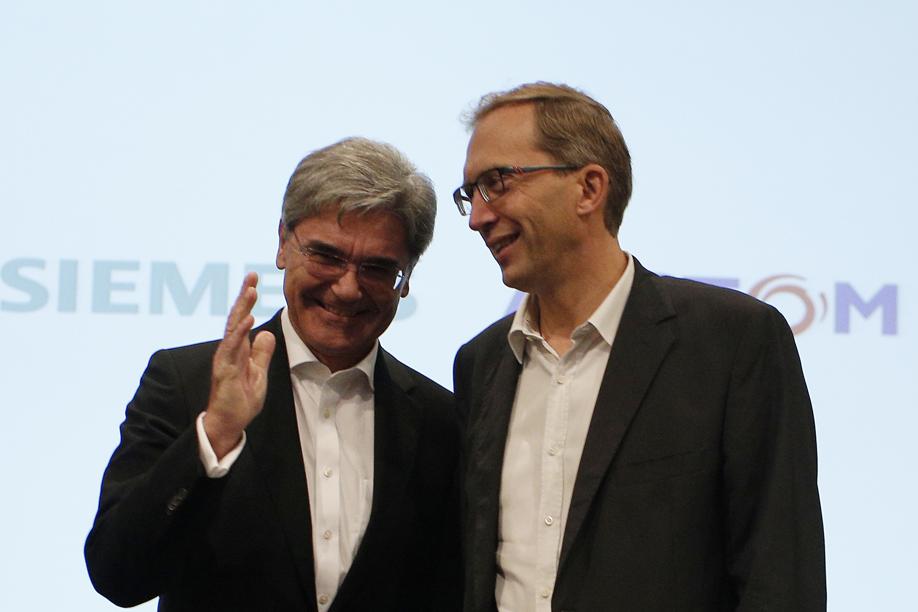
FRANKFURT — Once, the merger of two iconic European companies might well have been derailed by regional political rivalries. But in the case of a deal between Siemens and Alstom, those concerns have receded in the face of a larger threat: China.
The proposed merger of Europe’s two largest train makers, one German and one French, demonstrated on Wednesday that economic imperatives are pushing the Continent together even as populist politicians try to pull it apart.
Siemens, a German electronics and engineering giant, and France’s Alstom, a maker of the high-speed TGV, said late Tuesday that they will merge their units that make trains, streetcars, and signaling systems. The deal is backed by the French government, and the two companies provided details of the deal the following day.
The new company, to be called Siemens Alstom, is a response to intensifying competition from China Railway Rolling Stock Corp., the state-backed train maker that has been winning contracts in the United States and in emerging markets, where mass transit is a fast-growing business.
The company’s success is emblematic of China’s increasing economic power, which, combined with a more isolationist American foreign policy, is forcing European leaders to violate old taboos in order to improve the functioning of the European Union and its economy.
“The message of this merger is that the European spirit is alive,’’ Joe Kaeser, chief executive of Siemens, said at a news conference in Paris on Wednesday. “That’s a powerful message in times that are marked by populism and nationalism and social and political divides.’’
The announcement comes just days after a far-right party won seats in the German Parliament for the first time since World War II. On Tuesday, Emmanuel Macron, France’s president, called for “the rebuilding of a sovereign, united and democratic Europe’’ that would include stronger border controls but also a European budget large enough to help countries in economic trouble.
Competition from China has already been a factor in other big European mergers. Last week, the German steel giant ThyssenKrupp said it would merge its European steel operations into a joint venture with Tata Steel. And last year, Nokia of Finland acquired Alcatel-Lucent, a French maker of telecommunications equipment, in part to address intense competition from China’s Huawei.
Other sectors, like shipbuilding or semiconductors, could also be ripe for mergers.
Macron has made competition from China a central focus of his European policy drive. This year, he proposed Europe-wide scrutiny of any new major stakes by Chinese companies in European industrial jewels, but was met with resistance by small countries like Greece and Hungary, which are eager for new investment.
The French president and other leaders have grown increasingly alarmed that the EU is ceding control of advanced technology to China. In a recent speech in Athens, Macron called for strengthening the bloc into a “power that can face the US and China.’’ Just weeks ago, Chancellor Angela Merkel of Germany tightened rules to limit takeovers of German strategic assets, a move aimed at Beijing.
Chinese competition was a driving factor in Macron’s backing to seal a deal between Alstom and Siemens, despite outcries from political opponents in France that he was handing over a French icon to the Germans.
The deal is in part a bid that being bigger may be a better way to counter China Railway Rolling Stock, the world’s largest maker of railway equipment. The European company could yet grow further: There had been speculation Siemens could link up with Bombardier. On Wednesday, Kaeser did not rule that out.
Still, with sales of over $33 billion, CRRC is bigger than the train businesses of Siemens, Alstom, and Bombardier combined.



